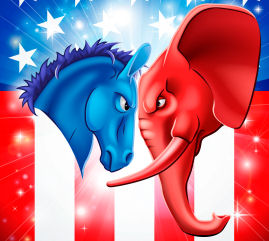
A decade after microbiologists began to suspect that many groups of bacteria can communicate — by releasing and detecting chemical pheromones to gauge their population density — the molecular structure of a key protein in this interbacterial communication has been solved.
This discovery could be the first step toward human intervention in these signaling pathways, a phenomenon known as quorum sensing, either by thwarting activities of harmful bacteria or facilitating activities of helpful ones. The work is reported by researchers at Cornell University, Argonne National Laboratory and Monsanto Co. in the latest edition of the journal Nature (June 27, 2002).
“There are many examples of bacterial processes that are effective only when carried out by large numbers of bacteria acting in a coordinated fashion, and coordination of behavior requires a communication system,” explains Stephen C. Winans, professor of microbiology at Cornell.
He notes that one kind of bacterial biofilm smothers the lungs of cystic fibrosis victims. Knowing the configuration of an essential quorum-sensing protein might permit structure-based design of a drug to block the chemical signal before bacteria join in a drug-resistant biofilm. Conversely, the rapid formation of useful biofilms, such as biofilters to clean water or biobarriers to contain contamination, might be encouraged now that biologists know, in precise structural detail, what the quorum-sensing signal needs to proceed.
Molecular census-taking also is thought to occur in more than 70 other types of microorganisms, including bioluminescent bacteria, which together produce light from a chemical reaction but alone must remain dark. Among human pathogens that use quorum sensing to estimate their population densities are Pseudomonas aeruginosa , which can cause serious infections, particularly in burn victims, and Yersinia pestis , the bubonic plague bacterium that killed millions during the Middle Ages.
Compared to these pathogens, the bacterium targeted in the Cornell-Argonne-Monsanto study, an agricultural pathogen called Agrobacterium tumefaciens that causes tumors in a wide variety of plants, seems almost trivial. But there was a good reason for the choice.
“We started with Agrobacterium tumefaciens because it is a much-studied and well-understood organism,” says Winans, whose laboratory in the Cornell College of Agriculture and Life Sciences isolated and purified the so-called TraR protein and sent it to X-ray crystallographers at Argonne. There, the protein was crystallized and examined in a synchrotron X-ray beam from the national laboratory’s Advanced Photon Source. A sophisticated computer program then transformed millions of X-ray data points from the crystallized protein into an atom-by-atom, three-dimensional map of the molecule.
The result was a microsecond snapshot, the Nature authors say, of quorum sensing in progress — the structure of the A. tumefaciens TraR protein, in complex with its pheromone N-3-oxooctanoyl-L-homoserine lactone (or OOHL) and the protein-binding site on bacterial DNA.
Microbiologists have borrowed the term “pheromone” from entomologists because they believe that insectlike chemical signaling and communication also can occur among bacteria. But the idea of bacterial quorum sensing, which came under serious consideration only in the last decade, is still as much theory as established fact, Winans cautions. The presence of a second, seemingly redundant apparatus for quorum sensing in Pseudomonas bacteria “makes us wonder if something else also is going on,” Winans says.
Whatever the mechanism, it appears to be a vital pathway in a single, free-floating bacterium’s attempt to collaborate with others of its kind. Thanks to techniques developed by the Cornell-Argonne team to purify the A. tumefaciens protein and solve its structure with X-ray crystallography, workers at other laboratories can now try to find the structure of different proteins in other bacteria and design specific treatments to interrupt or enhance the quorum-sensing process.
“And who knows,” Winans says, “we might even find a cure for crown gall in plants.”


















Comments are closed.